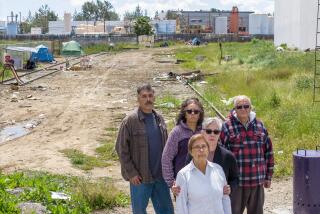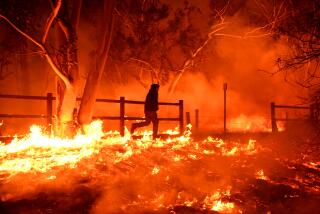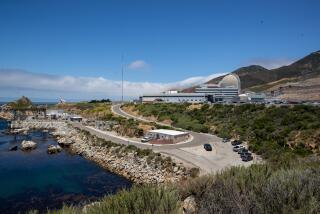San Onofre barred from restarting until problems are solved
The head of the federal agency overseeing the nation’s nuclear power toured the troubled San Onofre plant Friday and promised that the facility’s reactors would not restart until officials find the root cause of the mysterious equipment problems that have closed them for the last two months.
Nuclear Regulatory Commission Chairman Gregory Jaczko toured the darkened plant along with Sen. Dianne Feinstein (D- Calif.) and Rep. Darrell Issa (R-Vista) and talked to Southern California Edison officials about the unusually fast degradation of steam generator tubes that carry radioactive water in the plant’s two working reactor units.
The NRC, which has a team of inspectors at the site, has prohibited Edison, the plant’s operator, from relaunching either of the reactors until the cause of the tube wear is understood and fixed.
“The issue of the steam generators is a very serious issue, we take it seriously, and after some very frank discussions today, I can say that Southern California Edison takes it seriously too,” Jaczko told reporters.
The steam generators in both of the plant’s reactor units were replaced within the last two years at a cost of $671 million. The new equipment was intended to last until the end of the plant’s operating license in 2022, and possibly beyond that if Southern California Edison applies for license renewal.
But the plant has been out of service since Jan. 31 when a tube in the Unit 3 reactor began leaking and released a small amount of radioactive steam. Since then, Edison has found unexpected wear in more than 300 tubes in the plant’s two reactor units, and eight tubes in the Unit 3 reactor have failed pressure tests.
It’s not unusual for tubes to wear out over time, and plants are built to operate with a large number of tubes out of commission. But Jaczko called the wear at San Onofre highly irregular for such new equipment.
“It’s certainly a very unique phenomenon, and particularly in Unit 3,” he said.
The NRC has said the tubes in Unit 3 were vibrating and rubbing against one another, while the tubes in Unit 2 were rubbing against support structures but not against one another. Officials have not determined why the excessive vibration is occurring.
A report commissioned by the advocacy group Friends of the Earth contended that design changes in the new generators — including a different alloy used to make the tubes, a change in the flow rate, the addition of more tubes and changes in the support structures that hold the tubes in place — probably caused the issues.
It also suggested that Edison had sidestepped NRC review of the design changes by representing the new steam generators as being essentially like the old ones, an allegation that Edison has denied.
Jaczko said part of the NRC’s inspection of the plant will be reviewing documentation relating to the replacement. He did not comment on whether the design changes might have led to the wear.
Although Jaczko avoided giving any timeline for the investigation, the possibility that the plant could be closed through the summer, when energy demand surges in California, has generated concern.
Issa, whose district includes San Onofre, and who has been critical of Jaczko, said that he hopes to see at least one reactor returned to service by June.
“If it can be done with 100% safety, we’d like to have one or both of those reactors back online,” he said.
Leaders in the energy industry have said that in the event of a heat wave or other unexpected event, Southern California could see energy shortages without San Onofre. They have discussed contingency plans, including conservation measures, transmission upgrades and bringing retired generating units at a Huntington Beach natural gas plant back into service, although it remains to be seen if all of those measures can be implemented by summer.
Some have questioned the need for San Onofre to return to operation at all. They say the plant’s power can be replaced through other means and expressed concerns that Edison and the NRC might rush it back into service before it’s safe. A group of local activists staged a rally Friday on the beach next to the idle plant.
“We want to prevent San Onofre from being our Fukushima,” Patti Davis, a 52-year-old mother of three from San Clemente, said in reference to last year’s nuclear disaster in Japan.
Activists and elected officials from cities, including Irvine, Santa Ana and Laguna Beach, met with Jaczko to voice their concerns.
More to Read
Start your day right
Sign up for Essential California for news, features and recommendations from the L.A. Times and beyond in your inbox six days a week.
You may occasionally receive promotional content from the Los Angeles Times.







